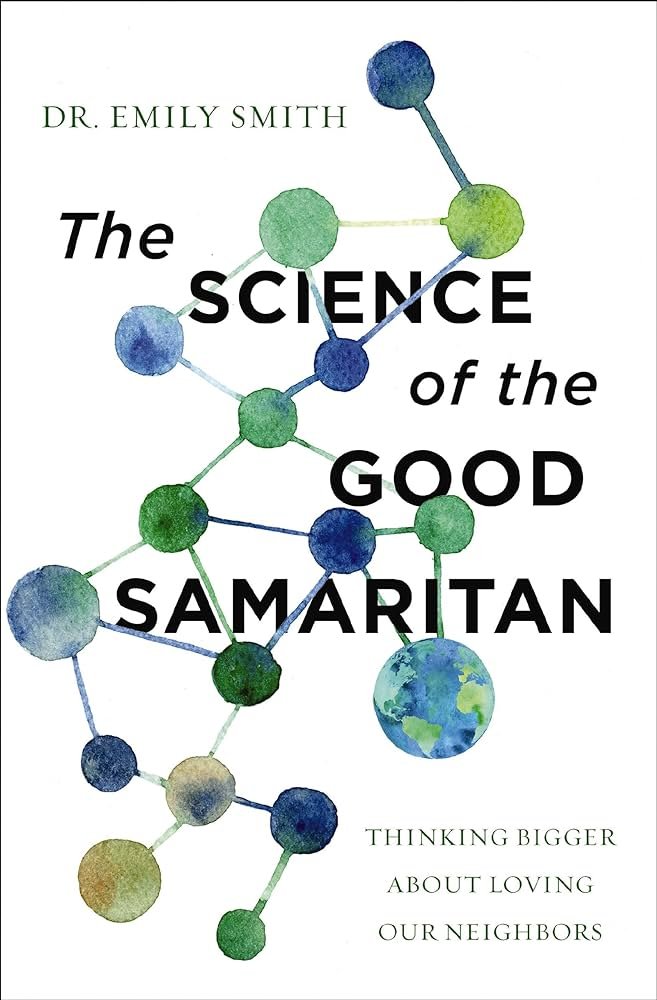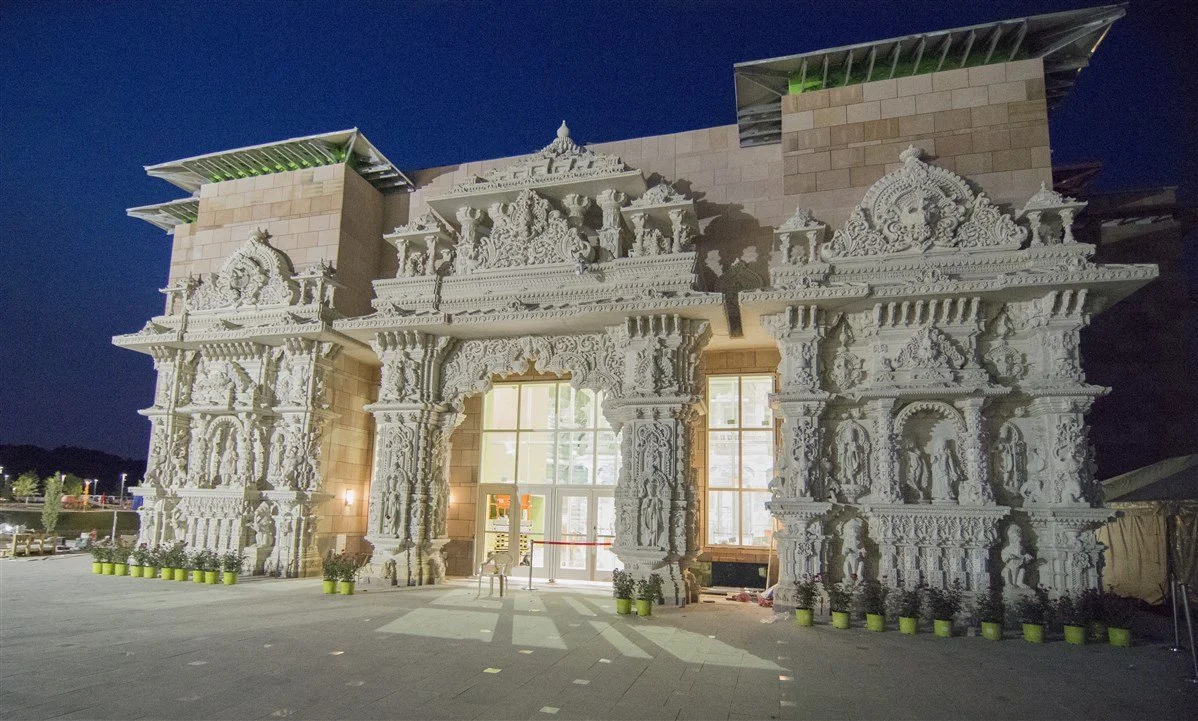November 2023 Interfaith News Roundup
by Paul Chaffee
The Interfaith News Roundup is a monthly publication of The Interfaith Observer. Paragraph by paragraph the Roundup summarizes major religion/interfaith stories that are underreported. Each paragraph is linked to the full story it introduces.
If you’d like to receive the Roundup monthly, you can sign up for our mailing list here.
Religion in the United States
“I remember thinking: ‘Oh, that’s the science of the Good Samaritan. It’s quantifying who is most at need and then choosing not to walk by,” she explained.”
The Science of the Good Samaritan by Emily Smith, published last month, is groundbreaking and will enrich lives and communities everywhere. Professor Smith, who teachers at Duke University, has a lot to say to anyone who has wondered why it is so difficult to make a difference in this messed up world. First, collect the data (for her, Epidemiology), and use what you learn to make a difference, particularly for the poor and stricken. And even though it is costly and requires courage and centering. More than 100,000 followers keep up with Emily digitally on “Friendly Neighborhood Epidemiologist.”
Comforted by this generosity of spirit, it is jarring to run into Nilay Saioya’s suggestion that “America Appears to be Heading for a Religious Civil War.” Polling suggests that 42% of Americans agree with this dour prediction.
The numbers keep coming. Approximately half of American church goers believe that God wants them to flourish financially. More than three-quarters say they hear prosperity theology preached from their pulpits, up from up from 38 % in 2017. Fifty-two percent of congregants believe that God will bless them with prosperity according to their giving.
Liberty University, the conservative institution founded by Jerry Falwell, has been fined $37.5M for the sexual indiscretions of two former leaders, including a president convicted of rape. The school is appealing the judgment. The school is renowned for its strict sexual-behavior rules for students and recent scandals.
Photo: Wikimedia
Roughly 3.3 million Hindus live in the United States, approximately one percent of the population, and they are making a difference in various arenas. Consider religious architecture. They recently consecrated the BAPS Shri Swaminarayan Mandir in Robbinsville, New Jersey, a place of worship for Hindus and others. It supplements the 187 Hindu temples already in the US. This is the largest, resting on 137 acres of New Jersey farmland and decorated with 10,000 statues.
This happy occasion can’t mitigate the cultural conflict raging in India’s diaspora, reflecting similar struggles in India itself. The quarrel in this case concerns the legal status of caste, the social system which classifies and evaluates people according to their political/spiritual/economic standing at birth. The debate concerns whether or not California should oppose caste discrimination legally or not. The bill passed the state legislature, but California’s Governor Newsom vetoed it, saying the state has adequate ways to oppose discrimination, including caste-based oppression.
Sister Helen Prejean, the famous anti-death penalty advocate, has called out Louisiana Attorney General Jeff Landry’s illegal effort to block the state’s pardon board from considering mass clemencies.(Incidentally, Landry is running to be Louisiana’s governor.) Mass clemency seems hardly as dramatic a cause as capital punishment. Remember, though, that Sister Helen’s earlier story – Dead Man Walking – famously generated a bestseller, an Oscar-winning feature film, an opera, and global fame.
Religion in the World
Romana Didulo — Photo: Facebook
You’ve probably read and seen more than you want to about the tragic war between Israel and Hamas, news which will continue as long as the conflict continues. But the rest of the world carries on as well, generating a multitude of religious/spiritual stories, stories in all sorts of size, from insignificant tiny tales to earthshaking narratives that change religion. Often the one becomes the other! On the inconsequential but fascinating side is the story of Romana Didulo, The self-proclaimed Queen of Canada has settled into an abandoned school in rural Saskatchewan where she preaches a Q-Anon inspired screed. (The neighbors are not happy.)
Compare that story with what another leader faces every morning: dozens of hot-button issues, some focused on individuals, others encompassing countries and continents, and 1.3 billion followers all over the world. Pope Francis, hobbling with medical issues but a stalwart spirit, has every excuse to slow down and enjoy the fruits of his labor. Hardly the style of the world’s foremost interfaith voice, though. His labor last month included leading a massive ‘synod’ or gathering of bishops discussing tough issues like the role of women in the church and the church’s relationship with the LGBTQ+ community.
And though he refrains from being dictatorial, Francis’ progressive attitude is clear: “I would like to emphasize that, among God’s holy and faithful people, faith is translated in dialect and generally in a feminine dialect,” and “Clericalism is a whip, it is a scourge, it is a form of worldliness that defiles and damages the face of the Lord’s bride, the church,” the pope said. “It enslaves God’s holy and faithful people.”
All the while, the pope has had to contend on an almost daily basis with Bishop Joseph Strickland from Texas, an arch-conservative who opposes the Pope in every way he can.
What’s the common thread here? Buddhism, Christianity, Confucianism, Islam, Taoism, and more? Flummoxed? Pew Research Center comes through again with an extended report titled “Buddhism, Islam and Religious Pluralism in South and Southeast Asia.”
Is religion good for you? Gallop Polling spent seven years collecting data on whether religious people are happier in life. Their general conclusion: Turns out to be a complicated set of issues. The overall results: “Gallup finds that religious people around the world report being more positive, have more social support, and are more involved in their communities than those who are not religious.” That said, the Gallop study ranges over a variety of issues including positive point of view, personal evaluation, life evaluation, and a health index.
Then we might ask, is religion good for the world? This question is fraught with disagreement. The good news, though, in short, is that the United Nations has spent decades studying how to improve the planet and the human condition, focusing its work around 17 Sustainable Development Goals (SDG) for the globe. Number 13 is “Take urgent action to combat climate change and its impacts.” The Parliament of the World’s Religions reports how a number of international faith-based, interfaith, and nonprofit groups are working together on SDG 13
Interfaith Stories
In terms of faith traditions and climate, Who believes what about climate? Clemente Lisi provides an extensive overview in “What Different Faith Traditions Believe about Climate Change.”
It is disconcerting to read a story about one interfaith effort quarrelling with another. All the more surprising to see the Hindu, Buddhist, Sikh and Jain American Congressional Caucus controversially emerge from Congress. It was inspired by a Democratic congressperson from Michigan, Rep. Shri Thanedarh, a Sikh. The wrinkle is that Thanedarh is very pro-Modi, the Indian prime minister aligned with Hindu right wing nationalistic voices. Groups including Hindus for Human Rights, the Sikh Coalition, and the Indian American Muslim Council have criticized the new Caucus for not being representative or inclusive.
Even sadder comes the AP story with the headline, “Jews spitting on the ground beside Christian pilgrims in the Holy Land sparks outrage.” Despite the government’s denial, some are suggesting that in Israel “Jewish identity has been growing around anti-Christianity,” with the tacit blessing of Prime Minister Netanyahu’s administration.
Imam Irshad Osman is a rabbi at the Danforth Islamic Center in Toronto and stood with Toronto’s interfaith community, including its acknowledgement of historic Canadian oppression of Indigenous peoples. This led the Imam to reexamine himself and his mission in life. That led to creating the Muslim-Indigenous Connection program, also known as MIC,
The imam writes, MIC “started with training 25 Muslim youth on the art of dialogue to encourage reconciliation. It continued with providing multiple opportunities for youth to learn about native spirituality, values, beliefs and struggles from Indigenous elders themselves. It continued with Muslim youth going on a site visit to the Six Nations Indian reserve to internalize what they learned so far through sights and sounds and meeting people on the ground. It culminated in participants implementing micro projects in small groups to effect change for the common good.”
The extraordinary results of the project are detailed in Osman’s story, including how additional groups across the continent are using the same approach.
And another good-news story. You may have read that Florida is seeking to end Black history in its schools and libraries. In response, African American clergy are working together to fill the gap and bring their history vividly back into view. Talk about finding gold in the ashes.
Header Photo: Flicker





